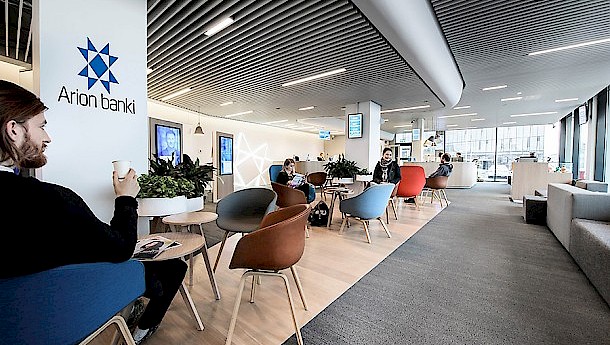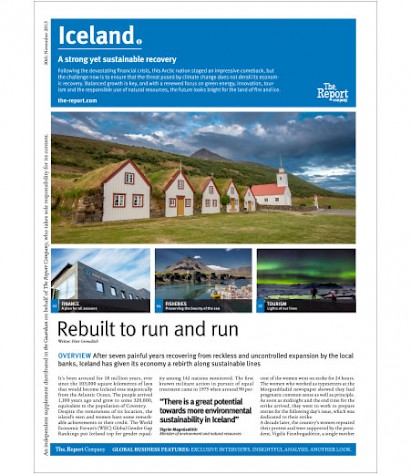Bailed-out US and European banks were considered “too big to fail”. In Iceland’s case, it was thought local casualties were “too big to save”.
At the same time as sub-prime loan defaults were wreaking havoc upon the stability of the US banking system, Icelandic lenders were equally scattering credit on projects of dubious quality. Yet the Reykjavik path to salvation – let the reckless banks go to the wall and their miscreant managers to jail – seems to have produced a more durable solution than pouring public money into the offending institutions.
“[In 2015], Iceland will become the first 2008-10 crisis country in Europe to surpass its pre-crisis peak of economic output,” according to Peter Dohlman, IMF Mission Chief for Iceland. “The key differentiating factors supporting Iceland’s relatively strong recovery are worthy of further study, but rapid external adjustment through depreciation and limited government absorption of private financial sector debt were likely important factors,” he added.
“We will not allow banks to go on wild adventures abroad”
Mar Gudmunsson Governor of the Central Bank of Iceland
Tweet ThisAlso important is the lesson learned. A sustainable future for Iceland rests on combining its traditional assets and skills, such as aluminium, fishing, energy, and tourism, with the development of newcomers such as pharmaceuticals, data centres, and bio-fuels.
High interest rates offered by Icelandic banks had attracted so much money from abroad that banks were jointly worth ten times the country’s GDP. This signalled an economic shift from exports into international finance, an area suffering from a dearth of experience. Fuelled by traders’ pursuit of profits, the value of the krona rose ninefold between 1994 and 2008.
Inevitably, disaster struck. Many businesses went bankrupt; the stock market fell by 95 percent; loan interest rocketed to 300 percent plus; almost two-thirds of bank assets were written off after the banks collapsed; and interest rates rose to 18 percent to curb inflation. Capital controls were introduced in November 2008 to avoid complete devastation. The major banks were reconstituted as state-owned domestic operations and will be sold off at a suitable time.
““Emphasis on loans has moved away from big firms
to smaller companies and individuals””
Höskuldur H. Ólafsson CEO of Arion Bank
Tweet ThisBut by summer this year, the government announced that it was now ready to phase out those capital controls, in a move widely seen as symbolic of the end of the crisis for Iceland. To discourage mass withdrawals by foreigners from the 1.2 trillion krona (£6.0 billion) in frozen bank assets, a 39 percent tax will be levied on all transactions. The downside of capital controls is that they deter foreign investment and increase borrowing costs. Lifting them will also make the sale of the reconstituted banks more likely.
Iceland has staged what appears to be the fastest recovery on record. The national debt is falling and the government has paid off ahead of schedule part of the billions in loans it received from the IMF. “Other indicators of Iceland’s successful trajectory are its low inflation, stable exchange rate, and ready market access,” said Dohlman. The IMF loans were partly to prevent the krona from falling even further and to protect domestic bank deposits.
“Ratings agency upgrades show we are back on track
and will affect our terms in the financial markets”
Bjarni Benediktsson Minister of finance and economic affairs
Tweet ThisNaturally, there are also temporary downsides to the recovery strategy. Loans, especially mortgages, became difficult to acquire and average household debt rose. Even here sustainable solutions are appearing. Half of Arion Bank’s loan business is geared to individuals and it is now the biggest bank provider of mortgages.


 Central Bank of Iceland. Photo: Birgir Isleifur Gunnarsson
Central Bank of Iceland. Photo: Birgir Isleifur Gunnarsson









